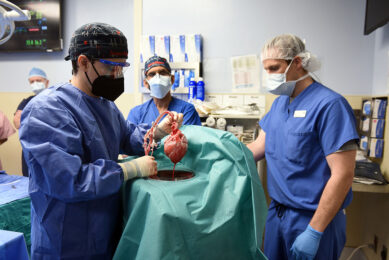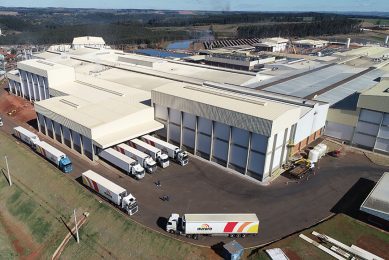Does ‘topping’ help?
We all get this problem to a greater or lesser extent. Topping is the term given to removing pigs to a spare pen or even on to slaughter which are 5% to 10% ahead of the rest of their companions in a pen. Until I am persuaded otherwise, however, topping is not for me.
Topping is sometimes done about a week to ten days before slaughter when the pens are beginning to look distinctly crowded. As it seems to be a growing trend, I did some measurements in 2010 with co-operating farmers as I was unsure whether some forms of topping were a good idea.
Results
The results encourage me to say… Topping or ‘selective removal’ is done for a variety of reasons:
(a) Removal to avoid overweights
Of course this is essential in order to avoid a penalty, but those chosen must be loaded straight on to the transporter and not kept mixed in one holding pen and thus handy for the early-morning collection.
(b) Moving fastest-growing pigs to a pen
Deliberately moving seven to ten days before estimated shipping date, some of the fastest-growing pigs to another pen – if such accomodation is available. Two producers constructed straw bale pens for this purpose but were careful not to be tempted to mix growers from different pens together to avoid skin damage from scrapping and antagonistic stress negating any improved growth rate. Topping adherents claim that the growth rate of the moved pigs improves by about 20 g/ day and of those left behind, due to more space and less competition, by up to 80 g/ day. This we found to be mostly correct.
(c) Conventional topping
Sending some of the fastest-growing to slaughter about a week sooner than normal. These pigs are shipped within the contract weight range but well towards its lower end. We tried this, and dependent on the terms of each farm’s contract, some 4.5 kg of potential deadweight return was sacrificed, costing €6.50 per pig – say €13 for the two biggest pigs sent on early from each increasingly overcrowded pen of 15 pigs. The remaining 13 benefited from more room and better access to feed – even ad-lib feed – but they still saved only half a day occupancy from their faster growth, plus €2 worth of food for the whole 13 pigs.
Yes, you can add to this a week’s food saved from those shipped early, but this only recouped one-third of the €13 lost income per pen from the meat they would have put on that final week.
Conclusion
The heavier you ship every pig as near to, but under, the contract overweight cut-off point, the better. On all three of these farms, topping carried out sensibly and well did have its physical benefits as claimed by the protagonists.
But it did not seem to pay
A classic example in that while published physical performance benefits way well be as found by researchers, when the econometrics are added in, then these favourable physical performance impressions may need to be questioned.
• Topping seems to work better when the pigs were overstocked – but they shouldn’t be in the first place! Surely it is cheaper not to overstock than to be forced into topping?
• Topping works better when there is spare accommodation available – which maybe should have been filled anyway, I admit!
So until I am persuaded otherwise, topping is not for me.











